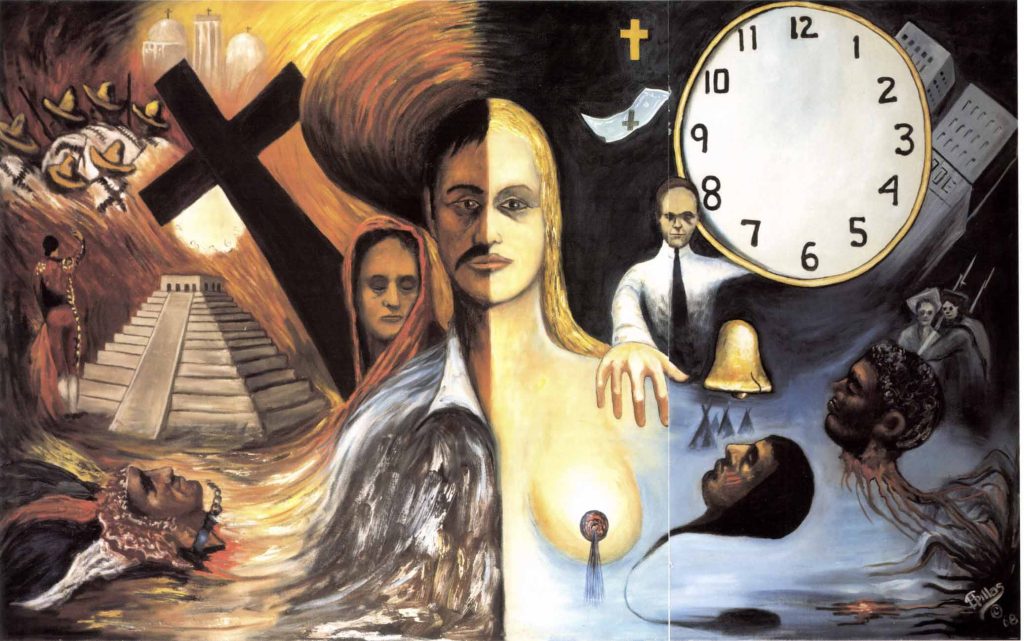
Originally published in June 2007, Language Magazine is republishing this article in memoriam of the activist, artist, and author, Herman Sillas.
I had gone through school from the first grade through law school speaking English, learning at an early age that Spanish was not to be used in school. Then, as I started my law practice, my first clients were Spanish speaking. I had to try and relearn the language we had spoken at home when I was an infant. Soon, young Chicano teachers and students challenged the Los Angeles District’s racist tactics of stripping children of their heritage, language, and culture. The accusation and the public debate that followed caused many of us to ask “What am I?”
I painted this painting with that in mind. I attempted to show the cultural conflict swirling within me at that time. We are an emotional people and this is shown by the warm colors and swirling movement of the brush on the left side of the painting. The male’s role as the dominant figure in the Mexican culture conflicted with the growing women’s liberation movement that was taking place during the 1960s in the U.S. This difference of emphasis is represented by the two half faces in the center of the painting, one a male, the other female.
In contrast, the Mexican woman is depicted as a Madonna while the Anglo female is nude (tassel excepted) exemplifying her new freedom and disregard for past societal restrictions. The large cross on the Mexican exemplifies the importance of church rituals in the lives of Mexicans, such as Baptisms, First Holy Communions, Confirmations, and Matrimony. My view at the time was that American churches had less impact on the Anglo social life. The small gold cross on the
American side and floating dollar bill reflect my thought then that Americans viewed money in the same context as God.
The Mexican Revolution (1914) is much closer in time than the American Revolution (1776). Mexican politicians still referred to the “revolution” in their appeal to voters. In the southwest U.S., 1776 is a long time ago and the colonial soldiers are depicted as ghost-like skeletons
in the painting.
The concept of time is not that significant in the Mexican culture when compared to the U.S. Thus, the huge clock on the American side of the painting dominates the American man whose reaching hand is attempting to regain his position in front of the woman. The Aztec pyramid and the bullfighter represent the Indian and Spanish cultures that blended to create the Mestizo and ultimately the Mexican. Note that the colors from the severed head of the Aztec blends into the Mexican man and woman. Whereas, the severed head of the American Native and African are left to float isolated apart from the main stream in American life. The Liberty Bell represents the concept of individual rights which is not a concept fully understood by Mexicans.
In the Mexican culture respect for authority is given a high priority. These were my thoughts in the 1960s at the time I painted the “Mexican American.” The painting was featured on the front page of El Macriado, a Chicano newspaper during the Chicano movement in those days. Even today when exhibited, this work draws much attention and comments since many can still identify with the cultural conflicts.
After painting this picture, my identity crisis ended. I understood and recognized that success required me to be myself – a personality that was composed of the two cultures. I was the new American-a blend of two cultures. I also learned that I loved my Mexican roots. I had subconsciously painted that side of the painting first. The Anglo side I found more difficult to paint.







